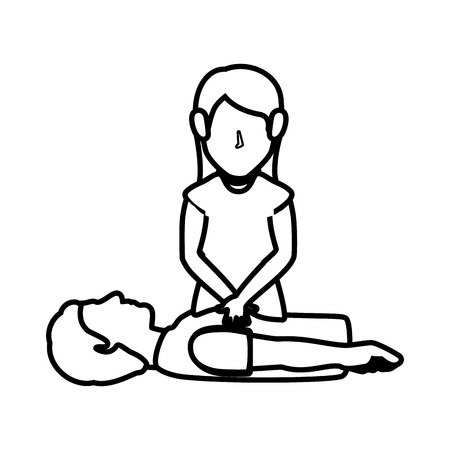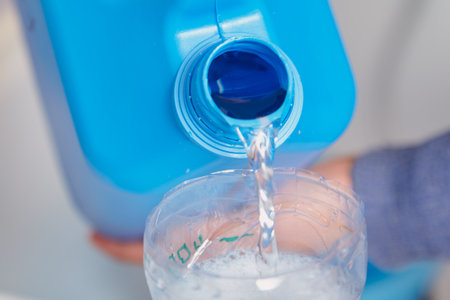Understanding the Importance of Hydration in Pets with Chronic Illness
Keeping your pet well-hydrated is one of the most critical steps in managing chronic diseases, especially kidney disease. Just like people, pets rely on water to help their bodies function properly—think of hydration as oil for an engine. When there isn’t enough fluid, everything has to work harder and can wear out faster. For pets with kidney problems or other long-term illnesses, staying hydrated is even more important because their bodies struggle to filter waste and regulate fluids on their own.
Imagine your pet’s kidneys as a coffee filter. When the filter is fresh and water flows smoothly, the coffee tastes great and there’s no mess. But if the filter gets clogged or dry, it stops working properly—leaving behind gritty residue and causing problems. In pets with kidney disease, their “filter” doesn’t work well, so keeping enough water in their system helps flush out toxins and keeps things running smoothly. Without proper hydration, toxins build up quickly, making your pet feel sick or even worsening their condition.
This isn’t just about kidney disease, though. Pets with diabetes, heart disease, or other ongoing health issues also depend on good hydration for healthy circulation, digestion, and temperature control. For example, a dog with heart disease may need extra fluids to keep blood pumping efficiently. Think of it like trying to pump syrup through a straw versus water—hydration keeps everything flowing easily.
In daily life, you might notice a healthy cat or dog drinking regularly from their bowl and having clear urine. But when they’re sick, they might avoid water due to nausea or fatigue—making dehydration a real risk. That’s why understanding how vital hydration is can help you spot early warning signs and take action before things get serious.
2. Recognizing Signs of Dehydration in Pets
Early detection of dehydration is crucial for pets, especially those managing chronic illnesses like kidney disease. Catching the signs early can make a significant difference in your pet’s health outcomes, potentially preventing complications that could land them in the veterinary ER. Below are practical steps American pet owners can take at home to spot dehydration before it becomes serious.
How to Spot Dehydration at Home
Being proactive about your pet’s hydration starts with simple, hands-on checks and daily observations. The following methods are easy for anyone to use:
| Method | Description | What to Look For |
|---|---|---|
| Skin Tent Test | Gently pinch a small area of skin (usually over the shoulders or between the shoulder blades) and then release it. | If the skin snaps back quickly, hydration is likely normal. If it stays tented or returns slowly, dehydration may be present. |
| Gum Check | Lifting your pets lip and pressing gently on their gums with your finger. | Healthy gums should be moist and pink; if they feel sticky, dry, or pale, this could signal dehydration. |
| Water Bowl Monitoring | Keep track of how much water your pet drinks daily by measuring bowl refills or using a marked water dish. | A sudden drop in water intake can indicate illness or worsening kidney function. Increased thirst could also be a warning sign in chronic disease cases. |
| Watch for Behavioral Changes | Observe your pet’s energy levels and behavior around water bowls or fountains. | Lethargy, reluctance to move, sunken eyes, or panting (especially in cats) may point toward dehydration. |
Why Early Detection Matters
Pets with chronic diseases like kidney failure are at higher risk for dehydration because their bodies struggle to maintain fluid balance. Even mild dehydration can quickly escalate into a medical emergency if left unchecked. By recognizing these early warning signs at home, you empower yourself to seek veterinary care sooner—potentially avoiding costly hospitalizations and ensuring your pet maintains the best quality of life possible.

3. Fluid Therapy Options: At-Home and Veterinary Approaches
When managing chronic illnesses like kidney disease in pets, maintaining proper hydration is crucial. There are several fluid therapy methods, each suitable for different situations and stages of illness. Understanding these options helps pet parents support their furry companions effectively.
Encouraging Drinking at Home
For pets with mild dehydration or those in early stages of chronic diseases, the first step is to encourage increased water intake at home. This can be done by providing fresh water in multiple bowls around the house, offering pet water fountains, or even adding a little low-sodium broth to make water more appealing. For example, a cat with early-stage kidney disease may simply need extra encouragement to drink more frequently throughout the day.
Dietary Adjustments for Hydration
Switching from dry kibble to canned or wet food can significantly boost your pet’s water intake since wet foods contain much higher moisture content. For instance, a senior dog with chronic liver disease might benefit from this dietary change, helping maintain hydration without additional interventions.
Subcutaneous Fluid Administration
If a pet’s condition progresses and they are unable to maintain adequate hydration through drinking alone, subcutaneous (under-the-skin) fluids may be recommended. This method involves injecting fluids into the space beneath the skin, where it is slowly absorbed into the bloodstream. Many American pet owners learn to do this at home for their cats or dogs with advanced kidney failure under veterinary guidance. It’s a practical solution that allows families to provide essential care without daily vet visits.
Intravenous Fluids at the Vet Clinic
For severe dehydration or acute health crises—such as when a cat with chronic kidney disease stops eating and drinking entirely—intravenous (IV) fluids administered by veterinary professionals become necessary. IV therapy delivers fluids directly into the bloodstream and is typically reserved for hospital settings due to its complexity and need for close monitoring.
Choosing the Right Approach
The best fluid therapy option depends on your pet’s diagnosis, current health status, and ability to tolerate treatments. Your veterinarian will recommend a plan tailored specifically for your pet—sometimes starting with simple home measures and progressing to more intensive veterinary interventions as needed.
4. Daily Habits to Encourage Hydration
Keeping your pet well-hydrated is crucial, especially for those with kidney or other chronic diseases. American households can easily integrate hydration-boosting habits into daily routines to support their pets’ health. Below are practical and actionable tips you can start today:
Add Variety to Water Sources
- Multiple Water Bowls: Place fresh water bowls in several locations throughout your home, such as the kitchen, living room, and even outdoors if your pet spends time there.
- Change Water Frequently: Refill water bowls at least twice a day to keep the water clean and appealing.
Enhance Water Appeal
- Add Ice Cubes: Especially in warmer months, dropping a few ice cubes into your pet’s bowl makes drinking more fun and keeps water cooler. Some pets enjoy chasing or licking the cubes!
- Pet Fountains: Many American pet owners use automatic water fountains. The moving water attracts pets and encourages them to drink more.
Incorporate Moist Foods
If your pet’s diet allows, adding wet food or mixing water into dry kibble increases fluid intake. Here’s a quick comparison:
| Dry Food | Wet Food | |
|---|---|---|
| Moisture Content | ~10% | ~75-80% |
| Hydration Benefit | Low | High |
| Feeding Method | Add water or broth to moisten | Serve as-is; mix with extra water if needed |
Flavor the Water (if Approved by Vet)
- Sodium-Free Broth: Add a splash of low-sodium chicken or beef broth to make water more enticing (always check with your vet first).
- Tuna Juice for Cats: A little tuna juice can encourage cats to drink more, but only use it occasionally and in moderation.
Establish a Drinking Routine
- Encourage your pet to drink after exercise, walks, or playtime—just like many Americans grab a bottle of water after working out.
- Praise and reward your pet when they visit their water bowl or finish their meal with added moisture.
Monitor and Adjust Daily
Keep track of how much your pet drinks each day. Notice any changes in thirst or urination patterns and report them to your veterinarian promptly. Consistent encouragement and these small daily habits can make a big difference in managing chronic disease and supporting your pet’s overall wellness.
5. Working with Your Veterinarian to Monitor Fluid Needs
Staying on top of your pet’s hydration—especially if they have kidney or other chronic diseases—means you need to work closely with your veterinarian. Regular vet checkups, lab tests, and clear communication are key tools in making sure your pet gets the right amount and type of fluids. Here’s how you can take action and what it looks like in real-life scenarios:
The Importance of Routine Checkups
Your vet appointments are more than just a quick look-over. For pets with chronic conditions, these visits allow your veterinarian to catch any subtle changes in hydration status or kidney function early. For example, a cat named Bella with early-stage kidney disease comes in every three months for exams. At one visit, her vet notices she’s lost a little weight and her gums seem drier than before. This prompts a change in her fluid therapy plan, preventing more serious dehydration down the road.
Lab Tests: The Data Behind Decisions
Bloodwork and urinalysis provide a window into how well your pet’s organs are working and how hydrated they really are. Lab results help the vet adjust subcutaneous fluids or oral hydration plans. Consider Max, a senior dog whose blood tests show rising creatinine levels—a sign his kidneys are struggling. By catching this early, Max’s vet increases his fluid therapy frequency before symptoms worsen.
Ongoing Communication Is Essential
You know your pet best! Share observations like changes in thirst, urination, energy, or appetite with your vet between appointments. Maybe you notice your elderly cat, Misty, isn’t finishing her water bowl as often this week. A quick call to the clinic means Misty’s care team can adjust her treatment sooner rather than later.
Personalizing Hydration Plans Together
No two pets are exactly alike—even if they have the same diagnosis. By combining regular checkups, lab results, and open dialogue about your pet’s daily behaviors at home, you and your veterinarian can create a tailored hydration strategy that evolves as your pet’s needs change. This proactive approach not only supports better health but also gives you peace of mind as a pet parent.
6. Potential Risks and How to Avoid Over- or Under-Hydration
Proper hydration is essential for pets with kidney and other chronic diseases, but it’s important to recognize that both overhydration and underhydration carry risks. Overhydration, or fluid overload, can cause swelling (edema), difficulty breathing, and even heart complications—especially in pets with compromised organ function. On the other hand, underhydration can lead to worsening kidney damage, lethargy, poor appetite, and further dehydration.
Recognizing Signs of Improper Fluid Balance
Pet owners should watch for early warning signs. Signs of overhydration include bloated abdomen, coughing, restlessness, or shortness of breath. Signs of underhydration often include dry gums, sunken eyes, decreased skin elasticity (skin tenting), and reduced urination. If you notice any of these symptoms, contact your veterinarian promptly.
Preventive Steps at Home
To avoid improper fluid management, always follow your vet’s instructions for fluid therapy—whether it’s subcutaneous fluids at home or oral hydration strategies. Use a measuring syringe or marked bag to deliver accurate amounts. Keep a daily log of how much fluid your pet receives and note any changes in their behavior or physical condition.
Practical Tips for Pet Owners
– Never increase or decrease fluid amounts without veterinary guidance.
– Offer fresh water at all times and monitor intake.
– For pets on wet food diets as part of their hydration plan, measure portions carefully.
– If administering fluids under the skin at home, learn correct techniques from your vet to prevent infection or accidental overdose.
– Schedule regular check-ins with your veterinarian to reassess your pet’s hydration needs as their condition changes.
By staying observant and proactive about your pet’s fluid management—and communicating regularly with your vet—you can help minimize risks and keep your pet comfortable and safe throughout their treatment journey.
7. Community Resources and Support for Pet Owners
Managing hydration and fluid therapy for pets with kidney and other chronic diseases can feel overwhelming, but pet owners in the U.S. have access to a variety of supportive resources. Here are some American-based options that can help you confidently care for your pet:
Online Forums and Social Media Groups
- Pet Health Network Community: This forum connects pet owners dealing with similar health challenges. You can ask questions about subcutaneous fluids, share experiences, and get advice from others who have managed hydration therapy.
- Facebook Groups: Search for groups like “Chronic Kidney Disease (CKD) in Cats & Dogs USA” or “SubQ Fluids Support Group.” Members often share tips on administering fluids at home, product recommendations, and emotional support.
Local Pet Support Groups
- Animal Shelters and Humane Societies: Many local organizations offer workshops or support groups for owners managing chronic pet illnesses. Check community centers or veterinary offices for flyers or online event listings.
- Pet Therapy Meetups: Meetup.com and similar platforms host gatherings where pet parents can connect, exchange practical hydration tips, and offer encouragement to one another.
Hospital Hotlines and Veterinary Helplines
- 24/7 Vet Hospital Hotlines: Many major animal hospitals, such as BluePearl Veterinary Partners or VCA Animal Hospitals, have phone hotlines where you can speak directly with veterinary staff about concerns related to fluid therapy or emergencies.
- University Veterinary Teaching Hospitals: Facilities like the Cornell University College of Veterinary Medicine often provide guidance for pet owners managing complex conditions at home.
Navigating Your Options
No matter where you live in the U.S., there are reliable support systems available. Don’t hesitate to reach out—whether it’s joining an online forum to troubleshoot hydration routines or calling a hospital hotline when you’re unsure about symptoms. Leveraging these resources not only helps you manage your pet’s medical needs more effectively but also ensures you have emotional support throughout your journey.

